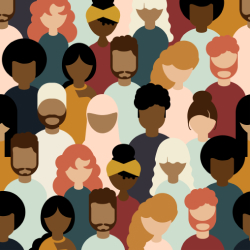With digital health care comes not just information, but empowerment
Before the pandemic, 96% of visits to the Mayo Clinic in Minnesota were in person. As of last month, just 15% of them are. This huge shift to telemedicine didn’t happen because of advances in technology, but because of the mother of invention. As the saying goes, when I feel the heat, I see the light.
Even though as a sector health care’s level of digitization is still only half that of retail and travel, the digitation of health care is rapid, massive and likely permanent.
This week, The Economist detailed those changes in what it calls “a revolution.” The health care industry is not very productive. It warns “Low efficiency may cause a fiscal crisis in some rich countries over the next two decades, as aging populations force medical bills up higher.”
Canada is one of those rich countries, and Ontario is its richest province. But with a long-overdue long-term care bill that will cost many billions of dollars to come near to fixing, that fiscal crisis could come just when Ontario’s next provincial election happens on June 2, 2022.
The bigger problem our governments face is that health care is “vast, bureaucratic and amorphous.” The fact that it always has been is why I started Medical Confidence 11 years ago.
I was confident that the health care system would remain inefficient enough for long enough that we could build a sustainable business helping patients navigate it – without the financial and social costs of diverting patients to a separate private health care system.
Today, Medical Confidence is growing, which is good, and health care costs are growing, which is not good. I join many dozens of health care experts in believing that what our system needs is not so much more money, but vastly more efficiency.
It’s easy to think the pandemic has taught us to use telemedicine more and in-person visits less. That’s one less, for sure, and it will save lots of money and aggravation.
But there’s a bigger benefit that comes from the digitization of health care. Before COVID, digitization was mainly used to provide online health records, not to mention the vast stew of content on the internet about health care. Unfortunately, this forced patients to become mini-clinicians sorting through mountains of information to separate the valid and credible from the biased and non-factual.
Now, because of the confidence telemedicine has given both the system and its patients, digitization can provide patients with accessible and credible navigation services that connect them to a range of appropriate care. In doing this, digitization will strip out layers of embedded costs and inefficiencies in our existing health systems.
Add to this the entry of non-traditional players into healthcare, and it won’t be long until the Age of Patient Empowerment moves into high gear.
Last month, for example, Amazon announced it was creating an online pharmacy, “that allows U.S. customers to order medication or prescription refills, and have them delivered to their front door in a couple of days.” Apple also recently revealed that you can take an electrocardiogram of your heart using your Apple Watch.
Earlier this year, we also launched My Health MaP a self-serve navigation tool providing Canadians a trusted source to find the right health care provider – one with the unique expertise and availability to diagnose and treat them.
The pandemic has been a great destroyer, to be sure. But it also seems it’s quite the creator, too.






